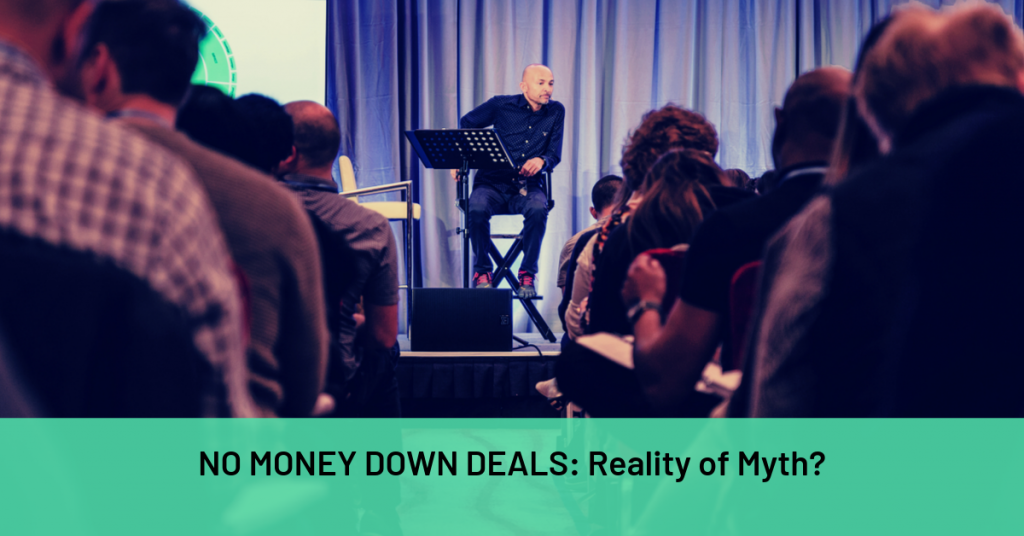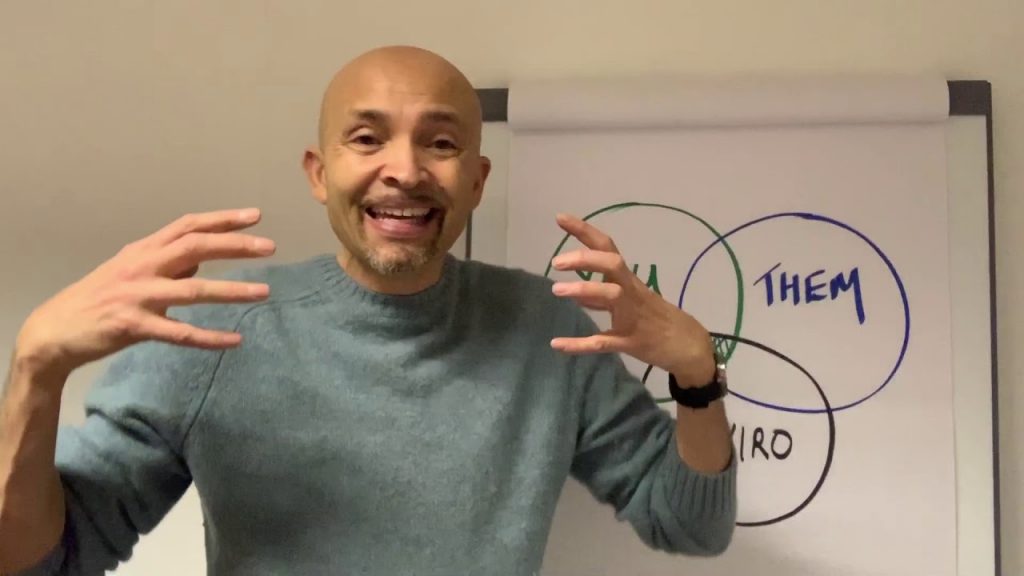https://www.youtube.com/watch?v=lijZZhIicEw
Enhanced Transcribe:
Hello it’s Dr Ro, I am speaking to you with a hat on today. You may have seen a couple of other videos I did while I was here at this same renovation project. I just thought I would put a cap on for a bit of variety.
I want to tackle the subject related to deals that involve putting no Monday down – are they real or a myth.
Now the question that has come in is:
‘Dr Ro, can give me some tips on no money down projects or property development, or property strategies?’
First of all, I want to say I am not an independent financial adviser. I am not a financial adviser for you. And what I’m about to share with you are educational tools, but you should seek professional advice from your own financial adviser with regards to anything to do with your own personal financial situation.
I want to talk about my own experience, and what I’ve done in the past with no money down deals. First off – l I don’t actually believe there is such a thing as no money down deals.
I don’t think it really works that way because whenever you do a deal you will need to put funds into that project. I think the term evolved out of America going back some years. When I first started, it was a big phrase around the early 2000’s, ‘no money down deals’, ‘no money down deals’.
Let’s think about what the phrase means in real terms. It means no money left in the deal after a certain period of time. That’s how I look at it. That’s how I approach it, which ultimately can then be an infinite return on investments.
What do I mean by that?
If I’m going into a project, the objective is to put the money into the deal without having to put too much in. I want to add enough value so that when I look to refinance that project at some point in the future, whether it’s six months, eight months, 12 months, then the new value allows me to get a new mortgage, which is higher than everything I put into the deal. I’ll come back to this in just a moment if you’re not following this completely. And that allows me to pull the original capital back out and now I’ve got no money left in the deal. What I’ve actually got is a cash flow and I’ve got equity in that deal.
That’s the phrase and terminology that I would like to use with you here. If you speak to somebody else and they say no, Dr Ro is talking BS, you can definitely do no money down deals. Fine, go and have a listen to what they’re saying but think about the law, think about what is legally permissible. And in the United Kingdom and again, seek advice and guidance on this, but if you’re doing a property for example, under a contract like an option contract. Where you have the right to buy an asset in the future then strictly speaking, you still have to put a pound down to lock that contract in place.
Let’s talk about my interpretation of no money down and let me give you some tips. I’ll give you three tips on this.
Firstly, whenever you’re looking to do this you’ve really got to be clear on where the capital is coming from. If your objective is to do a deal and then for example, pull the capital back out and then put it back to where it came from, that means there is no money left in the deal.
It just might be that in this example, you’re not using all of your own funds to do the project. One example might be that your parents have money sitting in their accounts, and since you’re their child, they’re happy to lend money to you. Again seek advice on this. Make sure that it’s all appropriate with lawyers and with solicitors and with the mortgage company. It might be you have a limited company and you set that company up, that is called company A, and mum and dad lend money to company A as a business loan. You set that loan up for the sake of argument, for 12 months. That is another conversation for another day.
Your parents have come to the table with their funds. You may have some money in there already. You might have, for example, the money for the deposit and they’re lending you money for the renovation, as an example. That could be one way to do it. It could be that because you’ve been able to structure it in such a way that their funds do the whole project, you’ve confirmed that with your solicitor where the proof of funds have come from, again you’ve got to seek advice on this.
I’m not telling you to do this, I’m saying go and seek advice on this. And also your mortgage broker needs to confirm that’s okay with the lender you’re dealing with. Let’s say that’s okay the company then say okay, we like to buy this project. So the first thing is making sure that you’ve lined up the funds so you know where they’re coming from. In order for this whole strategy to work and to be able to cycle in and cycle out. It’s rinse and recycle the money back out again, you’ve got to actually make sure you’ve got the funds to start with.
In this example, let’s say this is a project being funded through your parents. That’s the first thing in any sort of deal like this is you’ve got to know where the funds are coming from and how you’re securing it, what agreement you’ve got in place, is everything legal and typed etcetera. Make sure that it’s all approved with whoever you’re dealing with to sort out your funding going in the mortgage, for example, and the legals.
There could be that their money is being used to buy the property completely outright for the cash, in which case you’re not even using a mortgage to do it right. So again, that will depend on the strategy, that’s number one.
Second thing you’ve got to make sure is the market value. This is the second big tip when it comes to doing quote on quote, no money left in deals.
What do I mean by that?
Well let’s say you’re buying the property for £100,000. and you need to put £10,000 worth of work and costs in it, takes it up to £110,000. So what we’ve got to do now is we’ve got to make sure that now we are in this property for £110, some of it might be with the mortgage. Some of it might be with your funds from your parents, however you’ve structured it. Or it could be the whole thing’s been done with their cash and you’re going to pay them back at the end.
The next thing you’ve got to make sure that the value of the property at the end is sufficient so that the new mortgage on the property, i.e. 75% is greater than or equal to £110,000 that you’re going in. Now if you look across here I’m going to draw this up on this side so you’re clear on this, so there is no confusion. So at the top I’m going to put the market value. If you look up there, market value and that’s the market value after the property has been renovated. Remember, you’ve bought it from Mr and Mrs Jones. They’re distressed, they are going through a divorce, so they were asking £115, £120 and you came in and you said £90 and after a bit of haggling and going backwards and forwards you said you can move quickly, you’re not tied to a chain, a sale whatever. And they agreed because they want to get out the house. The house is run down it needs some renovation. But not a massive amount of renovation.
So what’s happened here is you’ve got a distressed seller and a distressed property, but only mildly distressed. So come down a notch. Market value what we know is that you’re in the property for £110 all in, so we need the new financing the new mortgage to be at least £110 or more to clear back everything you’ve gone into the deal for. In other words the purchase price plus the costs and that’s £110. So if we are going to get a 75% mortgage if you look about there you’ll see 75% mortgage comes up. I’ll put the figures in so you can see them and write them down.
So the 75% mortgage has to be £110 or more if the new value of the property comes in at £110,000 that’s not going to work. If the new value of the property comes in about £120 it’s still not going to work for you.
So you can reverse the calculation by trying the following example, take £110,000 and divide it by 0.75 just try that now, divide 110 by 0.75. I’ll do it on the screen for you and that will tell you the market value that the property needs to be. Because if you reverse the calculation which I’ll do over there probably somewhere down there, and you take market value times by 0.75 that will give you £110,000. So now I know my numbers, so I can actually work out what I’m going to buy the property for, what the costs are going into the property. That will tell me what all in for. I take the all in number divide it by 0.75 and that tells me what the buying price needs to be from the person buying from me. Meaning that when I sell the property in six months’ time or I refinance the property in six months’ time because I want to actually do a refinance and keep the property. Then that reverse calculation, the figure down there that’s what the market value has to be. If I go out to my estate agents and say or to my valuers and say, hey, listen, if I’m going to make this project what am I going to get for it? And they say about £122,000. I’m going to go, ah that’s not enough.
So I know that I need to be at that figure there in order to get my £110,000 back. Hopefully that makes sense.
Let’s fast forward and you’ve done the work in the property, the money has been lent to you by your folks in this example into the company, and it’s been done legally and properly. And now the property refinances and you get the market value that you wanted. Fantastic, you get 75%, you do the refinance. The new mortgage comes into the solicitors account. They then are legally obligated to pay off the old mortgage that you had originally on the property. Remember you bought it for £100,000 so the old mortgage would have been £75,000. So they’re going to pay off the £75,000.
Leaving the rest of the cash in the bank there and that’s written down somewhere on the left-hand side here.
What then happens is that money comes back to you minus the legal fees, keeping it simple. Great in that case, you go back and pay mum and dad out the company their money back. Now it’s six, seven months down the line, they may have lent you the money for a year to 2 years, which means you could go and do another project if there’s enough time to do it.
Let’s say you don’t and you pay them back. So over here what you’ve got is the new market value, it’s been refinanced. You’ve payed back whoever it is, in this case your parents. And now what you’ve got is no money in this deal.
There is no money in the deal. Let me say that again, there is no money in the deal because everything’s gone back. That means that property now is yours with equity on it because that’s the value and that’s the new mortgage.
The third point I just want to say here is you really should only be doing this if you’ve done the revaluation calculation for the cash flow. What do you mean by that Dr Ro?
I’m not going to do it here, that’s a separate exercise for a different occasion. But what I’m trying to say in a nutshell is when you refinance it on paper and you look at the new interest rates are going to be, and the mortgage is going to be. That mortgage has to be increased. You’ve got to take the rent, minus the new mortgage, minus your running costs it should still cash flow for you.
Remember, this is a no money left in the deal with cash flow. This is not a no money left in the deal with no cash. I’m going to throw my hat down; I’m going to get angry. I bought this property, I refinanced it, put the money back over there, oh my gosh it’s negatively cash flowing. Not a good strategy okay, so put our thinking hats on, calculation we do the numbers. Does it cash flow after the refinance, that’s the third tip.
Okay so that’s no money left in. Hopefully that’s helpful, hopefully the diagrams have been useful.
Dr Ro signing out, I shall see you on one of my future investing videos.
Take care, lots of top tips keep coming back.
Disclaimer: This video or written publication does not offer investment or financial advice and nothing in them should be construed as investment or financial advice. Our publications provide information and education only. The information contained in our publications is not and should not be seen as a recommendation to use any particular investment strategy. Always seek financial advice from an independent financial adviser around your own personal financial situation.
Disclaimer: This video or written publication does not offer investment or financial advice and nothing in them should be construed as investment or financial advice. Our publications provide information and education only. The information contained in our publications is not, and should not be seen as a recommendation to use any particular investment strategy. Always seek financial advice from an independent financial adviser around your own personal financial situation.



